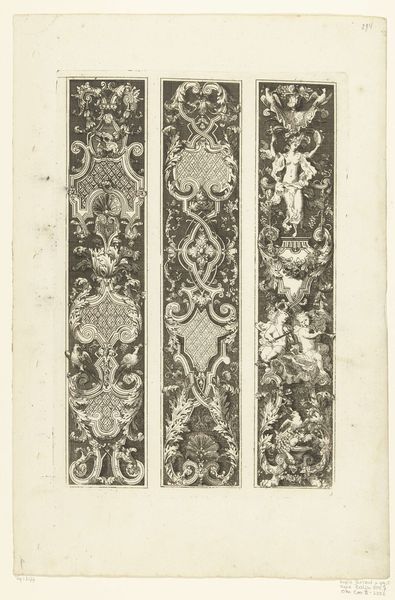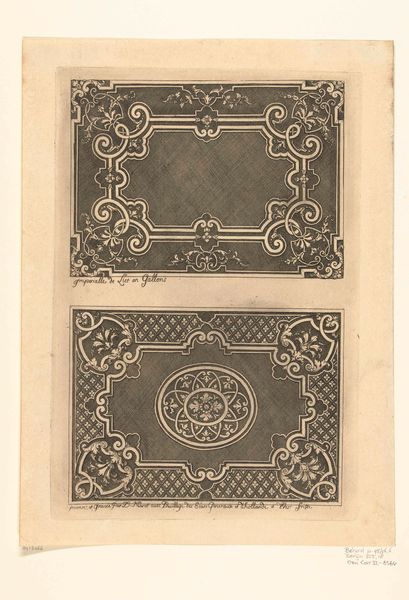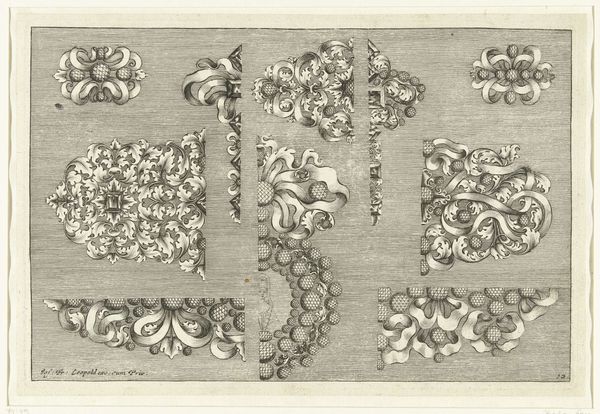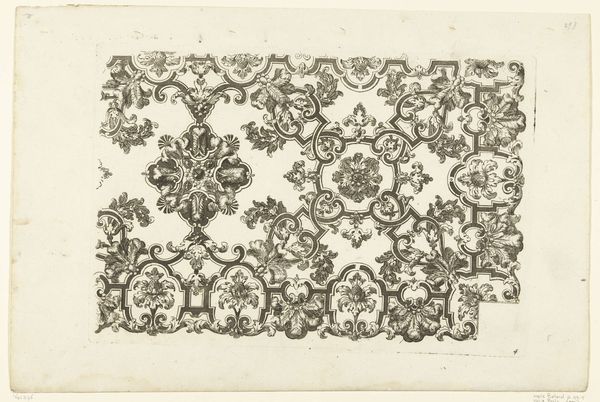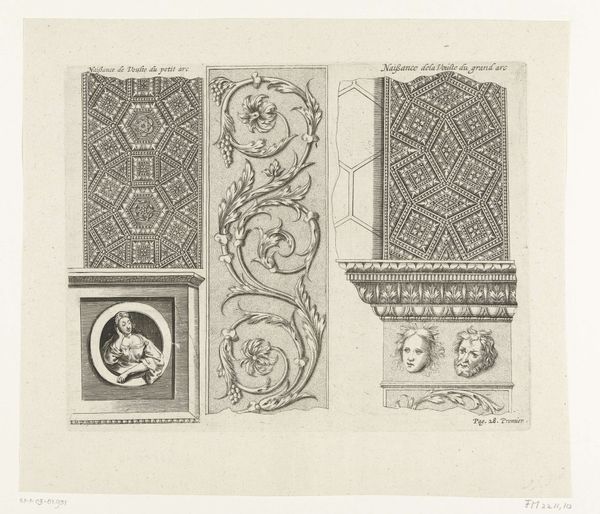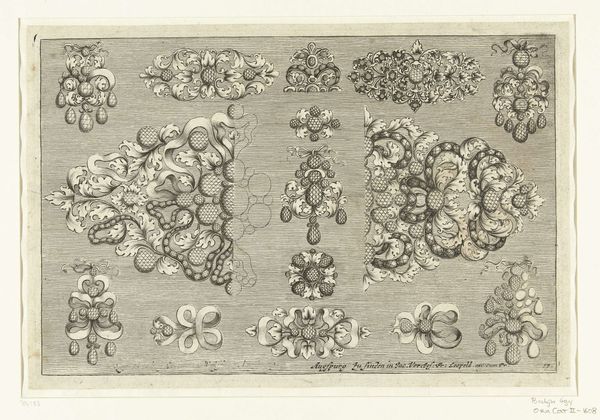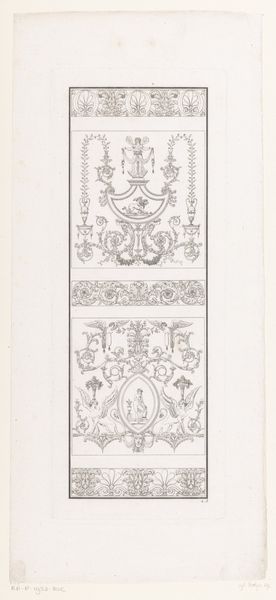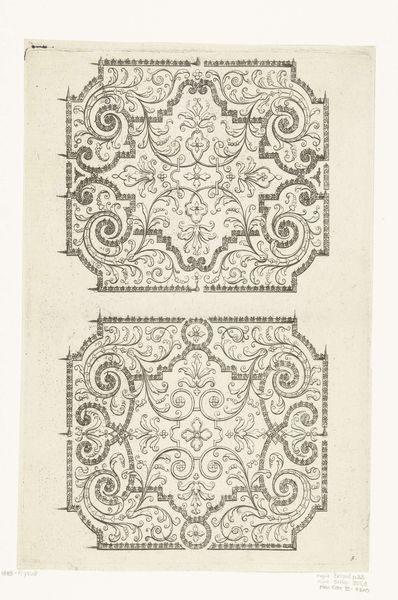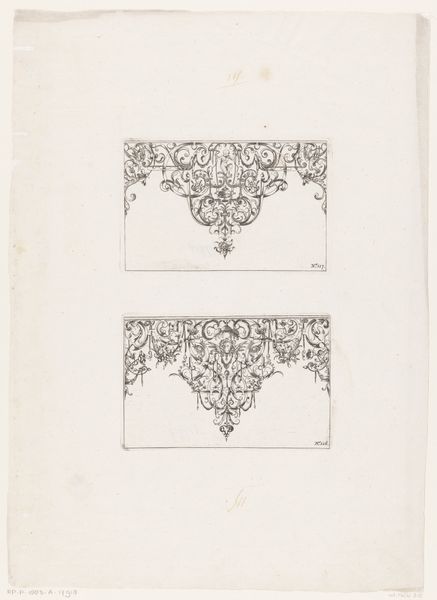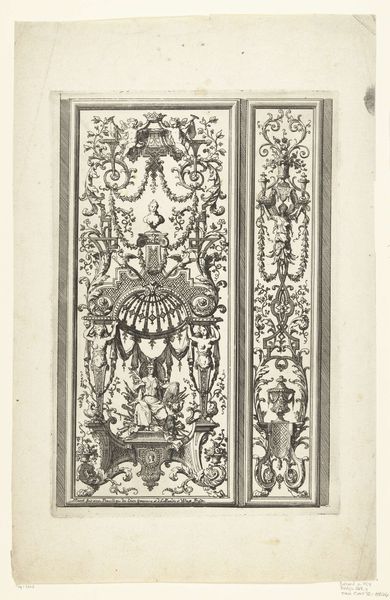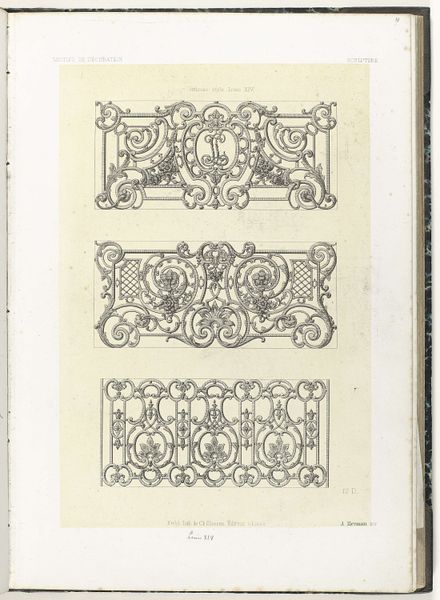
Dimensions: height 185 mm, width 270 mm
Copyright: Rijks Museum: Open Domain
Curator: Here we have "Drie verticale vlakken met decoraties voor stoelen", which translates to "Three vertical panels with decorations for chairs". It's an engraving on toned paper, and believed to have been created sometime before 1800 by an anonymous artist. It’s currently housed here at the Rijksmuseum. Editor: What strikes me immediately is the intricate detail—the linear patterns seem incredibly ornate, almost overwhelming the eye. It definitely speaks to a very particular period of design, wouldn't you agree? Curator: Absolutely. From a material perspective, the choice of engraving highlights a desire for reproducible designs, making them accessible to a wider audience beyond just the elite commissioning furniture. This hints at the burgeoning consumer culture of the time, doesn't it? Editor: Indeed. Looking closer at the panels themselves, I notice recurring motifs like floral garlands and classical faces. These formal elements certainly root the design in the Baroque aesthetic, reflecting a desire for grandeur and theatricality. It's quite decorative art in its purest form. Curator: And don't forget the implied labor here. Each swirl and flourish would have been painstakingly etched, speaking to the value placed on skilled craftsmanship. We see the meeting of the artisan, and their ability to replicate. It demonstrates something significant about labor processes and design sharing from that era. Editor: I’m not so sure. But it strikes me how the use of line dictates the form in its entirety; notice how light and shadow are evoked through varied line weight. There is also the creation of implied volume with those minute hatching marks in each form, rendering what would otherwise be flat to now appear dimensional. Curator: Perhaps it shows how ornament itself became a valued commodity. This print allows people to acquire and apply ornament without directly engaging the maker or even possessing furniture, it seems a new mode of material access! Editor: That may be, but what speaks loudest is the enduring fascination with classical form— the controlled symmetry, the precise execution— a clear statement of order and artistic discipline, almost as if the engraving acts like a treatise in design of this style. Curator: Interesting perspective, yes, but I also believe these types of patterns had an interesting part to play in broader systems of labor in that time. Thanks for exploring the many layers here. Editor: Indeed! The level of meticulous detail definitely warrants multiple glances!
Comments
No comments
Be the first to comment and join the conversation on the ultimate creative platform.
